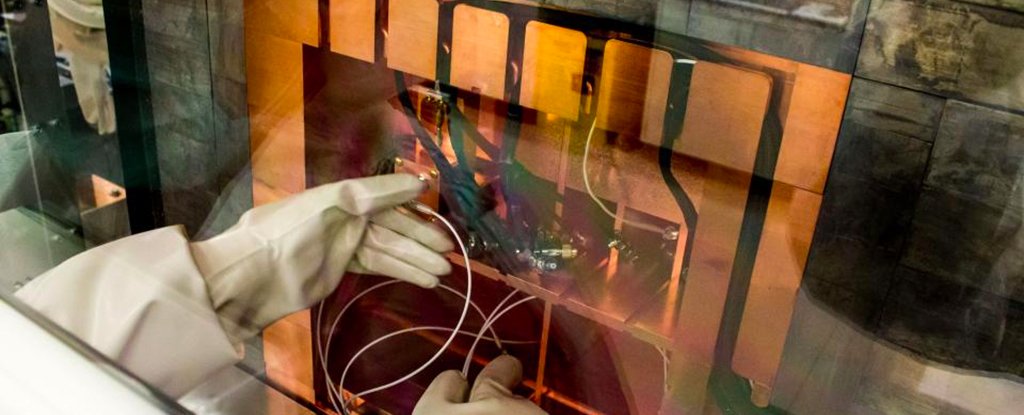Products You May Like
Keeping qubits stable – those quantum equivalents of classic computing bits – will be key to realising the potential of quantum computing. Now scientists have found a new obstacle to this stability: natural radiation.
Natural or background radiation comes from all sorts of sources, both natural and artificial. Cosmic rays contribute to natural radiation, for example, and so do concrete buildings. It’s around us all the time, and so this poses something of a problem for future quantum computers.
Through a series of experiments that altered the level of natural radiation around qubits, physicists have been able to establish that this background buzz does indeed nudge qubits off balance in a way that stops them from functioning properly.
“Our study is the first to show clearly that low-level ionising radiation in the environment degrades the performance of superconducting qubits,” says physicist John Orrell, from the Pacific Northwest National Laboratory (PNNL).
“These findings suggest that radiation shielding will be necessary to attain long-sought performance in quantum computers of this design.”
Natural radiation is by no means the most significant or the only threat to qubit stability, which is technically known as coherence – everything from temperature fluctuations to electromagnetic fields can break the qubit ‘spell’.
But the scientists say if we’re to reach a future where quantum computers are taking care of our most advanced computing needs, then this interference from natural radiation is going to have to be dealt with.
It was after experiencing problems with superconducting qubit decoherence that the team behind the new study decided to investigate the possible problem with natural radiation. They found it breaks up a key quantum binding called a Cooper pair of electrons.
“The radiation breaks apart matched pairs of electrons that typically carry electric current without resistance in a superconductor,” says physicist Brent VanDevender, from PNNL. “The resistance of those unpaired electrons destroys the delicately prepared state of a qubit.”
Classical computers can be disrupted by the same issues that affect qubits, but quantum states are much more delicate and sensitive. One of the reasons that we don’t have genuine full-scale quantum computers today is that no one can keep qubits stable for more than a few milliseconds at a time.
If we can improve on that, the benefits in terms of computing power could be huge: whereas classical computing bits can only be set as 1 or 0, qubits can be set as 1, 0 – or both at the same time (known as superposition).
Scientists have been able to get it happening, but only for a very short space of time and in a very tightly controlled environment. The good news is that researchers like those at PNNL are committed to the challenge of figuring out how to make quantum computers a reality – and now we know a bit more about what we’re up against.
“Practical quantum computing with these devices will not be possible unless we address the radiation issue,” says VanDevender. “Without mitigation, radiation will limit the coherence time of superconducting qubits to a few milliseconds, which is insufficient for practical quantum computing.”
The research has been published in Nature.
